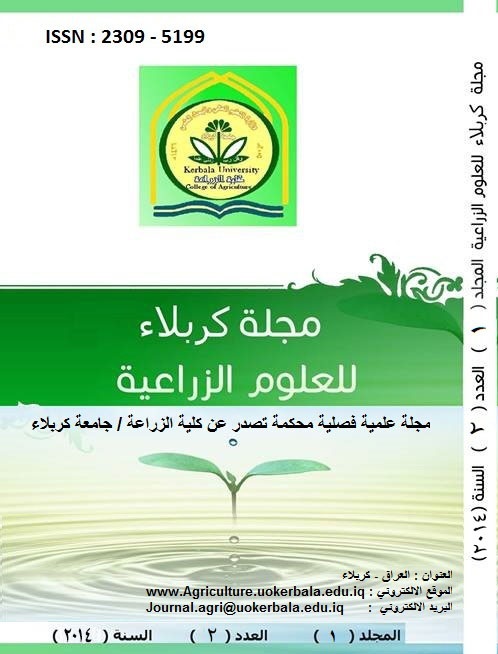Economic Analysis of the Consequences of Government Intervention in Maize Market in Iraq by using (PAM) Policy Analysis Matrix (Producer Sample in the year 2011)
DOI:
https://doi.org/10.59658/jkas.v1i2.351Abstract
This research care for determining the effects of government intervention in maize market for producers sample in the year 2011 by using Policy analysis matrix (PAM) approach .This usage will help us to determine protection coefficients and comparative advantage coefficients, in order to know the effect of government intervention in Maize price. The value of nominal protection coefficient (NPC) and effective protection coefficient (EPC) were (1.5) and (2.2) indicates that there was a positive subsidy given to producers. The profitability coefficient value for Maize was (4.74) indicated that government encourage efficient technology and the producers make high profit in that year . The value of domestic resource cost was (0.031) positive and less than one that means there was comparative advantage in Maize production for producers in the sample. And so the value of Producer Subsidy Ratio was (52.2 %) that mean there was a high subsidy from government to them. The value of Private Cost Coefficient Ratio was less than one about (0.306) that mean investment in Maize production more than cost so the investors had profit in that year.
Downloads
Published
How to Cite
Issue
Section
License
Copyright (c) 2014 Copyright (c) 2024 is the Author's article. Published by the Journal of Kerbala for Agricultural Sciences under a CC BY 4.0 license

This work is licensed under a Creative Commons Attribution 4.0 International License.
Licensing Terms
All articles are published under a Creative Commons License and will be directed to the Creative Commons Attribution 4.0 International License (CC BY 4.0) That permits use, distribution, and reproduction in any medium, provided the original work is properly cited. This license also allows the work to be used for commercial purposes.
Use by both non-commercial and commercial users
This content is licensed under a Creative Commons Attribution 4.0 International (CC BY 4.0) license, permitting use by both non-commercial and commercial users. Individual users may access, download, copy, display, and redistribute the articles to colleagues, as well as adapt, translate, and text- and data-mine the content, subject to the following conditions:
- The author's moral rights, including the right of attribution and the right to protect their work from derogatory treatment, are respected.
- Where content in the article is identified as belonging to a third party, users must ensure that any reuse complies with the copyright policies of the owner of that content.
- If the article content is reused for research or educational purposes, users should maintain a link to the appropriate bibliographic citation, including the DOI and a link to the published version on the journal's website.

